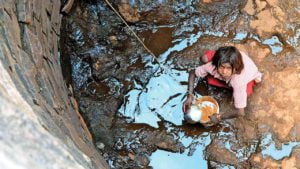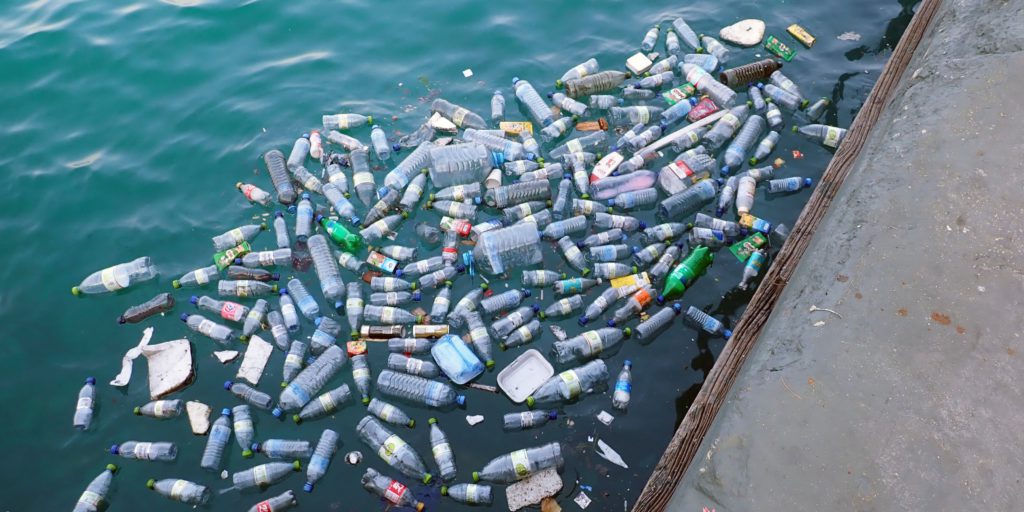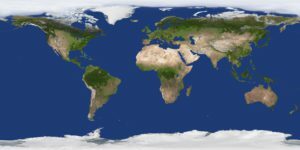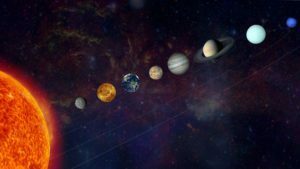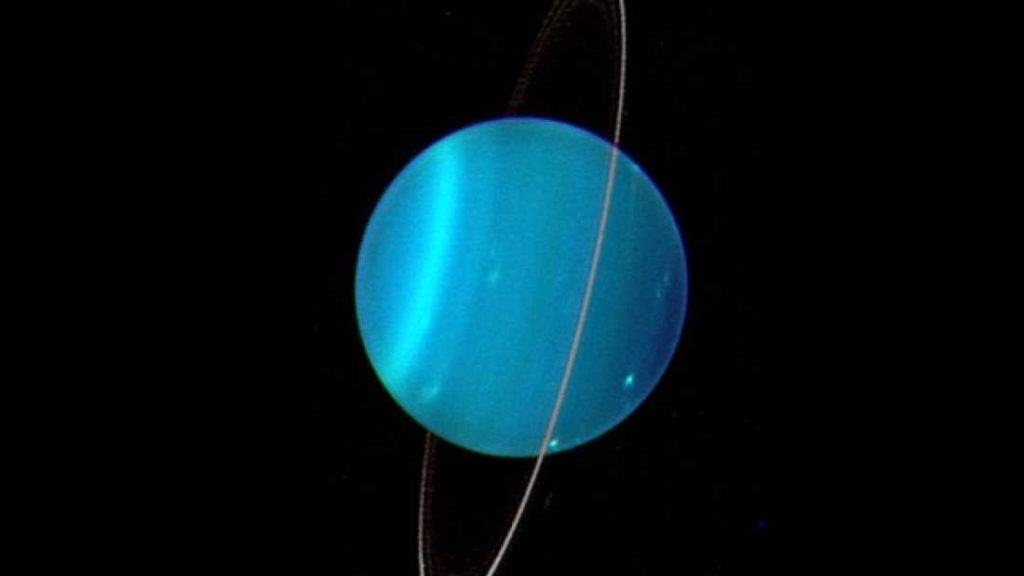Our home planet, Earth, is unlike any other. It is the third planet from the Sun and the fifth-largest planet in the solar system. Unlike the other planets, over 71 per cent of the Earth’s surface is covered with water. Another interesting fact about the planet is that it is the only place in the known cosmos where life has been confirmed. This article will look at some other fascinating facts about the planet Earth.

Earth in Space
- Earth’s Moon
- Uneven Gravitational Force
- The Earth is constantly rotating
- Our planet is 4.54 billion years old
- Rodinia was the ancient name for the continents of the Earth
- 250 million years ago, Pangea was born
- Earth Day Commenced in 1970
- It’s possible that the moon was formed as a result of a collision
- The Auroras are one of the most fascinating natural phenomena on the planet
- Earth used to be purple, according to legend…
- The World’s Largest Tree
- The World’s Oldest Tree
- The Hottest Place
- The world’s tallest mountain is still a mystery
- The Wettest Place
- Japan receives the most snowfall each year
- Earth is almost water
- A lightning bolt is HOT
- Conclusion
Earth’s Moon
Earth’s moon is the Solar System’s fifth-largest natural satellite. About 4.5 billion years ago, the Moon was formed when a rock the size of Mars collided with Earth shortly after the solar system was created. The newly formed moon then began revolving around the earth due to the planet’s gravitational field.
There are two fascinating facts about the moon. Firstly, the Moon rotates in lockstep with the Earth. This sort of movement results in the moon always showing the same face to the Earth. Secondly, the Moon is partially responsible for the tides in the oceans and seas on Earth. In addition, the moon also causes a tide on the Earth’s rocky surface. When the Moon orbits the Earth, a tide of rock rises and falls in the same way that tides in the sea do. The effect is not as dramatic as that of the seas, but it is measurable, with the Earth’s solid surface moving by several centimetres with each tide.
Uneven Gravitational Force
The mass of the Earth is dispersed among numerous landforms and features, such as mountain ranges, oceans, and deep sea depths, all of which have varying masses, resulting in an uneven gravitational field.
The Earth is constantly rotating
It may be difficult to comprehend, yet the Earth is constantly spinning. According to research, Earth rotates faster at the equator than at the poles. As the Earth is wider at the equator, the equatorial regions must travel almost 1,600 kilometres or 1,000 miles every hour to complete a 24-hour rotation. On the other hand, the poles rotate at a slow 0.00008 kilometres or 0.00005 miles per hour near the poles. Therefore, you’d be travelling faster at the equator, than at either the North or South Poles. Refer to this article for in-depth information about Earth’s rotation.
Our planet is 4.54 billion years old
That’s a lot of birthday celebrations! Through dating rocks and meteorites, the National Center for Science Education was able to calculate the approximate age of Earth.
Rodinia was the ancient name for the continents of the Earth
You’ve probably heard of Pangea, but not Rodinia. But wait a minute—800 million years ago, the Earth’s tectonic plates collided, joining all continents to form a region known as Rodinia.
250 million years ago, Pangea was born
Rodinia broke up, and all of the landmasses merged to form the supercontinent Pannotia, which existed for a brief period of time between 633 and 573 million years ago. After Pannotia broke up, the landmasses gradually reassembled to become Pangea. Pangea was encircled by a vast ocean known as Panthalassa, which was the only ocean on Earth at the time. Pangea broke apart again after 50 million years, forming two masses known as Gondwanaland and Laurasia, which finally disintegrated into the seven continents and oceans we know and study today.
Earth Day Commenced in 1970
Senator Gaylord Nelson of Wisconsin started Earth Day in order to raise public awareness about environmental issues. The date of April 22 was chosen to maximise student participation because it fell right in between their Spring Break and their year-end exams.
It’s possible that the moon was formed as a result of a collision
There isn’t much-known information about how the moon was formed, but one theory states that a planet, asteroid, or maybe a comet named Theia struck Earth, sending debris into its orbit. This debris could have shaped the moon that we see today.
The Auroras are one of the most fascinating natural phenomena on the planet
Auroras, also known as the Southern Lights, Aurora Australias, Aurora Borealis, or Northern Lights, occur when solar particles clash with Earth’s upper atmosphere near the poles. According to studies, this phenomenon forms a rainbow of lights that twinkle in the sky.
Earth used to be purple, according to legend…
Some scholars, such as Shiladitya DasSarma, believe that Earth may have formerly been purple. The idea that ancient bacteria may have used a chemical other than green chlorophyll to capture the Sun’s rays adds fuel to the fire.
The World’s Largest Tree
The General Sherman, a big sequoia in California’s Sequoia National Park, has a ginormous height of 52,500 feet and is more than 2,000 years old.
The World’s Oldest Tree
The oldest—verified—tree in existence, according to the Guinness Book of World Records, is a bristlecone pine known as Methusela. Methusela was estimated to be 4,852 years old in 2020.
The Hottest Place
According to NASA Earth Observatory data, on September 13, 1922, the warmest temperature ever (136 °F or 57.8 °C) was recorded in El Azizia, a town in Libya.
The world’s tallest mountain is still a mystery
Mount Everest’s summit, at 29,029 feet above sea level, is higher than any other summit. However, Mauna Kea and Mount Everest are mathematically tied because Mauna Kea measures 56,000 feet from the foot of the peak below sea level to its highest point.
The Wettest Place
With almost 10,000 millimetres of rain every year, Mawsynram state in Northeastern India, takes first place when it comes to yearly rainfall. That’s thanks to the monsoon season!
Japan receives the most snowfall each year
Surprising? Perhaps, but Aomori City, Japan, maybe the world’s snowiest location. Aomori City receives 312 inches of snow on average per year.
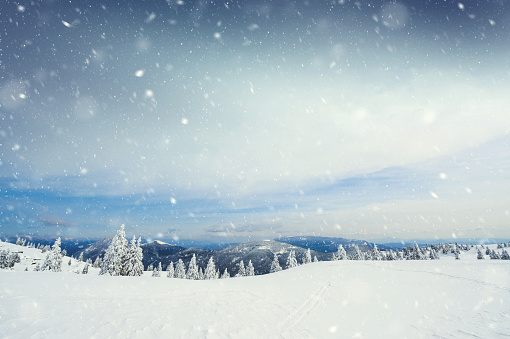
Earth is almost water
Oceans cover around 70% of the Earth’s surface, according to NOAA.
A lightning bolt is HOT
A single bolt of lightning can raise the temperature of planet Earth to about 30,000 degrees Fahrenheit. To put it another way, a lightning bolt can scorch the surface.
Conclusion
The facts mentioned above reflect only a few amazing things about the Earth. As the planet is constantly changing, we are sure to come across many more fascinating aspects, some of which may be caused by human intervention. Furthermore, we are yet to discover everything about the planet. For example, we have not yet investigated the deepest parts of the ocean, and once we do so, we may find new species of plants and animals that may be completely different from the ones we have seen so far. Thus, with advancements in technology, we will surely discover some more fascinating aspects of Earth.
Share with your friends
